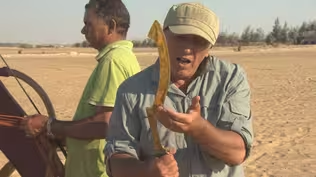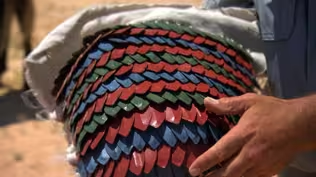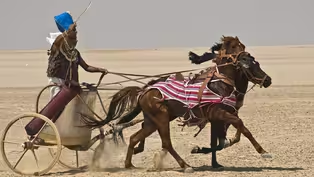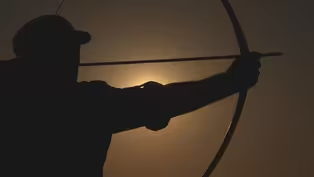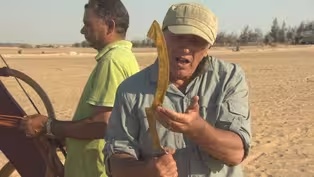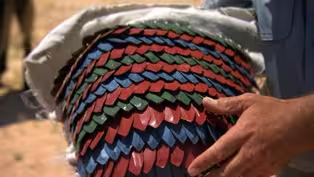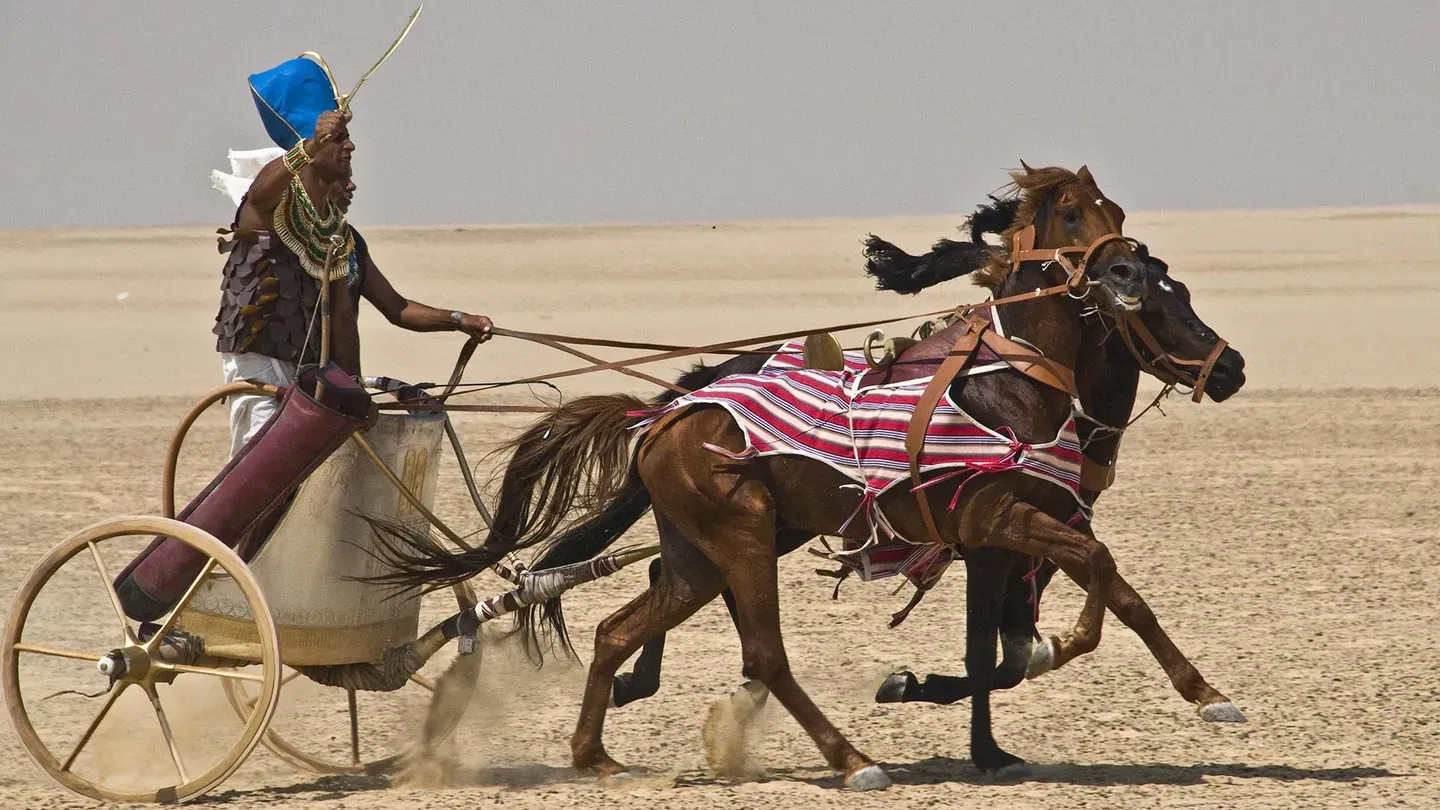

Building Pharaoh's Chariot
Season 40 Episode 5 | 52m 52sVideo has Closed Captions
A team uncovers the advanced engineering behind an ancient Egyptian war machine.
A team of archaeologists, engineers, woodworkers, and horse trainers join forces to build and test two highly accurate replicas of Egyptian royal chariots. They discover astonishingly advanced features, including spoked wheels, springs, shock absorbers, anti-roll bars, and even a convex-shaped rear mirror, leading one of them to compare the level of design to the engineering standards of 1930's.
Problems playing video? | Closed Captioning Feedback
Problems playing video? | Closed Captioning Feedback
National Corporate funding for NOVA is provided by Carlisle Companies and Viking Cruises. Major funding for NOVA is provided by the NOVA Science Trust, the Corporation for Public Broadcasting, and PBS viewers.

Building Pharaoh's Chariot
Season 40 Episode 5 | 52m 52sVideo has Closed Captions
A team of archaeologists, engineers, woodworkers, and horse trainers join forces to build and test two highly accurate replicas of Egyptian royal chariots. They discover astonishingly advanced features, including spoked wheels, springs, shock absorbers, anti-roll bars, and even a convex-shaped rear mirror, leading one of them to compare the level of design to the engineering standards of 1930's.
Problems playing video? | Closed Captioning Feedback
How to Watch NOVA
NOVA is available to stream on pbs.org and the free PBS App, available on iPhone, Apple TV, Android TV, Android smartphones, Amazon Fire TV, Amazon Fire Tablet, Roku, Samsung Smart TV, and Vizio.
Buy Now
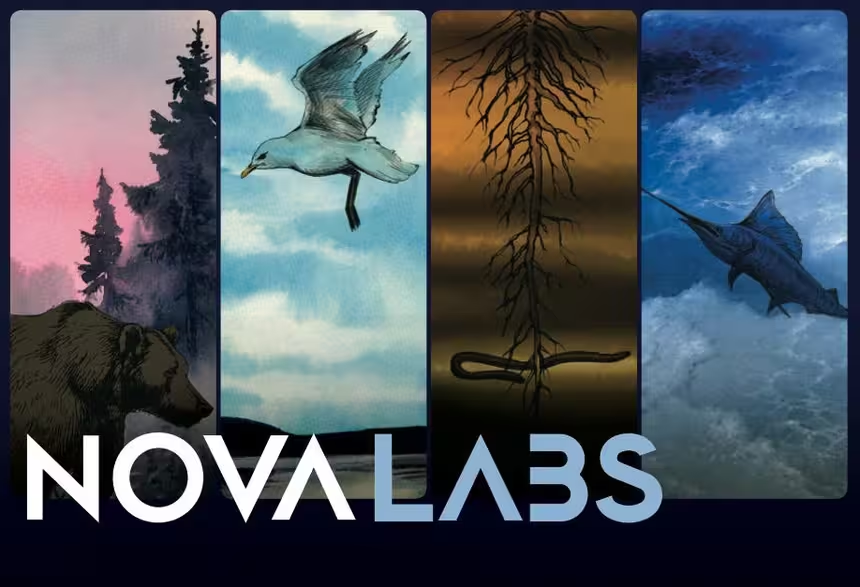
NOVA Labs
NOVA Labs is a free digital platform that engages teens and lifelong learners in games and interactives that foster authentic scientific exploration. Participants take part in real-world investigations by visualizing, analyzing, and playing with the same data that scientists use.Providing Support for PBS.org
Learn Moreabout PBS online sponsorshipNARRATOR: Egypt-- one of the great civilizations of antiquity.
It was here that one of the world's first writing systems was developed and where vast monuments in stone were built.
Then 1,000 years after the Pyramids, another technological revolution took place: a revolution in warfare.
The chariot arrived.
Over the next few hundred years, the pharaohs of ancient Egypt pushed back their borders and built a mighty empire.
Egypt's New Kingdom Empire was the greatest empire that the world had seen.
It really was on a massive scale.
NARRATOR: Was the chariot the Egyptians' secret weapon, giving them a crucial lead in the arms race?
Were there innovations built into the Egyptian chariot that gave them an edge?
BELA SANDOR: If you gave this to a modern designer, they could not do any better.
NARRATOR: Now a team of experts will work from 3,000-year-old clues to rebuild a replica of an Egyptian chariot and test it in simulated battle.
MIKE LOADES: Imagine 1,000 chariots.
It would be like Armageddon coming to you.
NARRATOR: Recreating the pharaoh's chariot, we'll test the claim that this was the weapon which built an empire.
"Building Pharaoh's Chariot," right now on NOVA.
Major funding for NOVA is provided by the following: NARRATOR: In about 1,550 BCE-- more than 1,000 years after the building of the Pyramids-- a new age dawned in Egypt.
This was a golden age of Egyptian power and wealth known to historians as the New Kingdom.
Over the next 300 years, the Egyptians built the largest empire the world had ever seen.
It's a period known for the astonishing treasure of Tutankhamun.
A time when the Ancient Egyptians constructed many of the mighty temples which can still be seen today, 3,500 years later.
But at the dawn of this golden age, Egypt was a country beset by enemies.
When a new young king, the pharaoh Ahmose, came to power, northern Egypt was occupied by a foreign people from the East known as the Hyksos.
What happened next is recorded in a tomb cut into a rocky hillside in a settlement called El Kab.
This tomb contains an account written by a soldier who fought in the pharaoh's army.
Here, this man is telling the story of his military career and his life.
NARRATOR: These hieroglyphs tell how the young soldier followed his pharaoh as he drove the Hyksos out of Egypt.
The account also highlights a remarkable fact: the Egyptians now had a new and devastating weapon: the chariot.
HARVEY: And the exciting thing: in this text, he's actually describing how he fought alongside the king's own chariot.
And we see the sign of the chariot here, one of the earliest images we have of the chariot in Egyptian writing.
NARRATOR: In the years that followed, chariots appear everywhere on tomb and temple walls.
And inscriptions alongside the chariots relate how Ahmose and other New Kingdom pharaohs went on to build the most powerful empire the world had ever seen.
As they overcame Kushites, Nubians, Canaanites and others, their empire stretched from Sudan up into what is now Turkey.
So was the chariot the key to the Egyptians' military success?
In old Cairo, a team of experts has come together, hoping to uncover the chariot's secrets.
Drawing on the skills of expert craftsmen, they plan to assemble and test what may be the first accurate working Egyptian chariot to have been built in thousands of years.
Carriage-maker Robert Hurford, who has built Roman and Assyrian chariots in the past, will be in charge of construction.
It's a very complicated structure.
The wheels are very odd.
The yoke is very difficult, first to make and secondly to make work.
NARRATOR: Robert has teamed up with equine expert Kathy Hansen, who thinks the harness for the horses was a vital component of the chariot.
HANSEN: I've done a lot of studying, and I think we know how they built their harness and I think I know how they trained their horses, so now we have an opportunity to put that to the test.
NARRATOR: For military expert Mike Loades, this is an opportunity to explore the chariot as a weapons system.
We know chariots were used in battle, but we don't exactly know how.
So we need to test it, we need to drive it, shoot the bow from it, so that's what's exciting.
This is undiscovered territory.
NARRATOR: The team's first task is to find local craftsmen who can help them build the chariot.
It's made of wood, so their priority is a skilled carpenter.
Abdou Mohammed is said to be one of the best in Cairo.
HURFORD: I've got this model that we've made... NARRATOR: Robert has brought with him a model to demonstrate what he is trying to achieve.
This is quarter scale, so you multiply everything by four and you've got the real thing.
NARRATOR: Many of the parts are curved, and Robert will have to find another workshop where the wood can be bent into shape.
But this is where most of the chariot will be built and assembled.
And they're obviously made that way for a reason... NARRATOR: Abdou has never tackled anything like this before.
It's a new idea, and he will try to prove that he is a good student.
Abdou, I look forward to working with you.
NARRATOR: The team has only eight weeks to complete the chariot before Mike returns to test it.
Their goal is not just to build a chariot, but to understand what might have given the Egyptians a military advantage.
This new war machine was not invented in Egypt.
These engravings reveal that chariots could be found hundreds of years earlier in nearby lands.
The Egyptians, meanwhile, were fighting on foot, using sleds to pull heavy loads, and then, as now, relied on donkeys for personal transport.
Horses appear to have been unknown for much of Egyptian history.
HARVEY: Around about 4,000 BC, we know that people were probably domesticating horses and creating the first chariots in places as far away as southern Russia.
And over time, that moves west into Syria, Lebanon and up into Turkey.
And the Egyptians felt they had to get a hold of it in order to compete on the world stage.
NARRATOR: When Egypt first obtained the chariot, it was probably quite basic, with a body that could carry two people supported on an axle with two wheels and a central pole.
And there was a harness which allowed the chariot to be pulled by two horses.
But however basic, for the Egyptians, the chariot was a revolution in warfare.
And building it required ancient skills which are hard to find today.
In a Cairo suburb, Robert and local organizer Magdy Rashidy track down one of the few steam benders in the country.
The owner, Mohamed El Salam, and his son Walid show Robert around their workshop where they make chairs, bending the wood by saturating it with steam to make it supple.
Robert demonstrates again what he's trying to achieve using his model, and shows them the parts which need bending.
So that's a piece and that's a piece... NARRATOR: Shaping the pieces won't be easy, but Mohammed seems confident he can adapt his equipment.
He'll need to work fast to meet their schedule.
HURFORD: They seem enthusiastic, anxious to get it done.
NARRATOR: Robert based his model on published descriptions.
But to understand how the Egyptians transformed the chariot, he'll seek advice from a man who has been investigating them for many years.
Here from the University of Wisconsin, engineer Bela Sandor has been studying some of the chariots found among the treasures of Tutankhamun's tomb, now in the Egyptian Museum in Cairo.
They were found in 1922 by archaeologist Howard Carter, who carefully reassembled and restored them.
Sandor has been looking closely at their design, trying to work out how the Egyptians improved their new war machine.
The first time I saw these chariots, I just walked through like most of the tourists, barely looking at them.
Two years later, I came back and I started realizing that there was more to these than just primitive structure.
NARRATOR: After years of careful analysis, Sandor has concluded that the Egyptians transformed a machine that was slow and cumbersome into one that was fast and maneuverable.
His calculations have convinced him that this is the world's first high-performance vehicle, with high-tech wheels, parts which function as springs, and shock absorbers, even a device to stop it from rolling over.
He now believes that the chariot was the pinnacle of ancient Egyptian engineering.
SANDOR: If you gave this to a modern designer, with computers and formulas, they could not do any better.
NARRATOR: Kathy Hansen believes that the technology of the harness was also a vital part of the chariot's success.
She's in the Cairo museum looking for clues to how it was put together, like this ancient bronze horse bit.
Mostly she has to rely on depictions of the harness in action.
No one knows exactly how this system of straps worked to pull the chariot.
She will have to depend on her own expertise to puzzle it out.
HANSEN: It looks theoretically like the Egyptians did all of the things necessary to create a functional harness.
The proof will be in when we actually design the harness, hitch it to horses and drive it.
NARRATOR: Robert now wants to select the woods he'll use for the chariot.
The ancient chariot builders used a range of imported woods, including ash and elm.
But visiting local timber yards, he sees no sign of these.
He looks instead at some of the local woods.
Although much of Egypt is desert, in the fertile areas of the Nile Delta there are plenty of trees to be found.
Robert thinks that a local wood like mulberry might be good for building the bent parts of the wheel.
It's a good substitute for ash.
Mulberry is quite springy, which is nice, it's what we want.
NARRATOR: But for the pole and the body, he settles on an imported wood: beech.
It's a reliable close-grained hardwood, suitable for bending and similar to elm, used by the ancient builders.
Before Robert starts building, he's now arranged to meet up with engineer Bela Sandor, who has identified some remarkable design features.
One of them is the joint above the axle, which the main pole fits into.
Sandor believes this apparently simple socket was probably one of the ancient Egyptians' most brilliant ideas.
SANDOR: We are looking at a fantastic marvel of ancient engineering because it has more than one function.
NARRATOR: Sandor maintains the joint was deliberately left loose, allowing the pole to move back and forth.
This makes the floor frame flex and act as a shock absorber, giving a more comfortable ride.
But the design has a second important function.
To prevent rollovers of the axle.
NARRATOR: Sandor thinks the pole was made flat at the end so it could engage firmly with the socket, like a screwdriver.
Now the pole resists any tendency of the axle to rotate and tip on uneven ground, helping to keep the chariot stable.
This simple-looking joint is a key detail for the chariot Robert is building.
We'll have a look at the whole thing... NARRATOR: Robert has now learned enough to instruct the carpenters on how they can make a start.
Abdou's first job is to make the floor frame.
Robert takes particular care to explain the importance of the socket.
HURFORD: Not in the corner, we want that corner.
Yeah, that's good.
NARRATOR: They can also start to fashion the wheel hubs and shape the axle.
The task of building the chariot is now underway.
HANSEN: That one's too tall.
I need short ones.
NARRATOR: Kathy is now looking for horses and has also enlisted some local help.
14 hands, 140 centimeters.
NARRATOR: She has teamed up with Sayed Maksoud, an expert horseman.
Together, they travel round some nearby horse farms.
She's looking for small horses like the ancient Egyptians used, and they must run well together.
She finds a mixed pair-- one brown, one black-- that she thinks will work well as a team.
Trot, trot, trot.
Oh, yes.
NARRATOR: As a precaution, Kathy and Sayed also choose a reserve pair: two very similar gray stallions.
All four horses are brought to the Saqqara Country Club on the outskirts of Cairo, where they need to be trained in just one month.
The grays are put into the same corral to get to know each other.
Stallions can be aggressive, and two powerful horses could quickly smash the chariot to pieces.
The early signs are not promising.
(neighing) But Sayed believes they will settle down.
NARRATOR: Although work is well underway, Kathy and Robert still have much to learn about the design of these ancient chariots.
The Valley of the Kings is behind the ridge.
NARRATOR: They travel down to Luxor, Egypt's capital city on the Nile 3,000 years ago, to see what secrets they can glean.
On a hilly ridge on the west bank of the river are the tombs of ancient nobles and officials.
Each tomb is richly decorated with scenes of life from thousands of years ago.
HANSEN: Robert, look!
HURFORD: I think this thing'samazing.
That's a beautifully drawnchariot.
HANSEN: Look, you can see your thong through your lynch pin.
HURFORD: The little details.
They're going to be so helpful to us.
Yeah, yeah.
NARRATOR: For Robert and Kathy, the paintings and reliefs are like blueprints.
They provide a wealth of detail which gives them a real insight into the chariot's construction.
It's clear to them both they have a challenge ahead if they're to bring the chariot back to life.
The paintings also show chariot building, with craftsmen shaping the wood to make the frame and other pieces.
The area in the middle, where you've got spokes, wheel-- and there's the pole up the top there and the yoke-- those are the steam-bent parts of this chariot.
It's almost a manual of how to do it.
HANSEN: Yeah.
(tapping and hammering) NARRATOR: And this is one of the few places where Kathy can study the harness.
Here is where your holdback strap comes down and your breastplate, and here are the rounded pads that were early, and there's your top of your neck fork, and you can clearly see the nosepiece.
(horses neighing) NARRATOR: The information gathered from images in the tombs and the Cairo Museum is invaluable, and Kathy is now ready to take her design to one of Cairo's harness makers.
She has drawn a plan and made a model of how it should work.
(speaking Arabic) Okay.
NARRATOR: The Egyptian harness is unlike any modern harness.
It uses a pair of neck forks combined with breast straps to create a form of collar which the horse then pulls from its shoulders.
She thinks the horses were attached to the chariot by binding their neck forks to a yoke, which was lashed to the chariot pole.
The harness also includes a bridle, designed, she believes, to keep the horses' heads down and their weight back, making the chariot more maneuverable.
That's the theory, but will it work?
The first step for the harness makers is to cut out the leather following Kathy's design.
Back in the Luxor Tombs, Robert and Kathy are still hunting for clues about the chariot itself.
The paintings reveal how the chariot evolved as the Egyptians perfected their new war machine.
The first major change is in the position of the axle and the wheels.
They start centrally under the floor, but gradually they move until eventually they are right at the back.
This shift reveals great mechanical insight, and Bela Sandor thinks he's worked out its advantage.
If the axle is somewhere in the middle of the platform, it creates for a harsh ride because the driver is standing directly on a stiff, bouncing axle.
NARRATOR: Moving the axle back has a dramatic impact on the suspension system.
It shifts the driver's weight forward onto the pole.
The wooden pole now flexes up and down and begins to act like a leaf spring on a modern vehicle, which softens the ride.
In the tombs, Kathy and Robert spot another key development.
At first, all the wheels had just four spokes, and all the early Egyptian chariots were the same.
But that began to change.
Soon, they were building chariots with eight spokes.
So why did they abandon the four-spoke wheel?
SANDOR: In this position, all of the weight is borne by this single spoke.
But as soon as the wheel rolls, that same weight will deform the unsupported arc length of the rim.
And then it comes back up again, so the axle is moving up and down and up and down.
The human body cannot tolerate this.
NARRATOR: The Ancient Egyptians' solution to this problem was to stiffen the rim by increasing the number of spokes to eight.
But this also made the chariot heavier, reducing acceleration.
So they tried six spokes, and this apparently worked so well, they stopped experimenting.
But the most unusual thing about the wheel is the way the spokes were constructed.
Each spoke is actually made up from two V-shaped pieces of wood.
To make the wheel, these V-spokes are glued together and glued around the central hub.
The V-apex makes it stronger and more durable.
NARRATOR: Robert is eager to put his newfound knowledge to the test.
He's never made a wheel like this before, and bending the V-shaped spokes to the correct angle could be tricky.
The steam benders have adapted their machines.
But they soon discover that making the spokes is more of a challenge than they'd realized.
Their machines can't cope; the bend is just not tight enough.
The problem is that they haven't thought this out before they did it.
They need to get the arms of the bender up at a different angle.
NARRATOR: They try again, adding wooden blocks to make the bend tighter... HURFORD: So you can't do it.
NARRATOR: ...without success.
After a complete rethink, they come up with a way of bending the spokes manually, just like their ancestors used to do.
I think that's good.
This is just the right shape, and at last we got there.
Well done.
NARRATOR: After the spokes, they tackle the rims of the wheels.
They're getting into the swing of doing it all manually now, although it's not as easy as it looks on the tomb walls.
But they've lost a lot of time.
Next day, the steam-bent parts for the wheels arrive at the carpenters'.
Robert can start to assemble the wheel with the carpenter Abdou.
They lay out the newly bent spokes.
We've got several things to worry about.
One of them is that the spokes run in line.
NARRATOR: After clamping the spokes together, the next step is to shape and fit the hub.
It's a complicated process, and completely different from making a normal wheel.
There are no joints between the V-shaped spokes and the hub; just pressure and glue.
I don't know how strong these wheels will be at the end.
They must have been strong enough; they made them for hundreds and hundreds of years in this way.
NARRATOR: Back in Luxor at the Temple of Karnak, Robert and Kathy are meeting Egyptologist Stephen Harvey to find out about a special chariot that was built around 1,450 BCE for one of Egypt's greatest warrior kings, Tuthmosis III.
The story of his military campaigns is inscribed on the walls of the temple.
Although some of this may be propaganda, few would dispute that he conquered many surrounding territories.
(shouting) (cheering) (horn blowing) NARRATOR: A major victory was at Megiddo, in the north of modern-day Israel, where Tuthmosis was fighting an alliance of Syrian rulers.
The battle is recorded in great detail here.
And the pharaoh, we're told, led his army in a chariot of shining electrum, an alloy of silver and gold.
HARVEY: You can see here we have a representation of the chariot, and it just says there, "a chariot worked in electrum."
Electrum, silver, gold-- these materials would all be used to express the wealth and the power and the symbolic value of the chariot.
NARRATOR: This shining chariot was the war machine used when the Egyptians were carving out their empire.
Kathy and Robert agree that this would be the ideal chariot on which to base their replica, the chariot they plan to build and test in simulated battle.
HURFORD: I think it's quite inspiring that we should try to make one along the lines of the biggest and the most aggressive pharaoh of those days.
Why don't we make one that could have been Tuthmosis III's?
NARRATOR: They go to the Cairo Museum to look for clues to what the electrum chariot might have been like.
This chariot body was found in the tomb of Tuthmosis III's grandson, Tuthmosis IV.
The front panel is built from layers of wood, linen and gesso, a mixture of gypsum and glue, and was originally decorated in silver.
It would have looked stunning, and they want to model the electrum chariot on this.
But while at the museum, they learn of an amazing find which could provide vital new information.
In the endless attics and cupboards of the Cairo Museum, the leather parts of a New Kingdom chariot were recently rediscovered.
The leather is now being restored by a team led by Andre Veldmeijer and Salima Ikram.
This is the only harness that anyone, including Kathy, has seen from ancient Egypt.
VELDMEIJER: We have two of those and they both have the same decoration.
Are they offset so like one could go on one horse on the outside and one go... (chuckling) yeah.
NARRATOR: This chariot had a front panel made of leather, and Robert is particularly interested in the way the panel was attached.
A drawstring threaded through the leather would have kept it in place and allowed them to easily remove it.
VELDMEIJER: Here's a drawstring.
That piece, for example, was used to tie it tightly to the framework.
If it's got a drawstring through it, it means it's removable, doesn't it?
IKRAM: Yes, you can change it.
NARRATOR: Robert is so intrigued by the removable leather panel that he decides to make two chariots instead of one.
He will make the pharaoh's chariot as planned with an electrum panel and another with just a lightweight leather panel.
In the carpenters' shop, Robert and Abdou have now assembled several wheels.
Bela Sandor takes a look.
He believes this design is inherently stronger than a wheel with normal spokes.
Robert is worried that with nothing but glue connecting the spokes to the hub, the wheel could break apart in tight turns.
HURFORD: I hope we've left enough, but of course it's all untried.
Yes.
NARRATOR: At the Saqqara Country Club, Bela and Robert decide to put the wheels to the test.
Their idea is to check their strength by towing a complete axle assembly behind a Jeep.
HURFORD: We're doing no more than 30 kilometers per hour but perhaps not absolutely flat out on the sharpest of the turns.
NARRATOR: Robert wants to make tight turns of the kind they expect the chariot to do.
If the hubs have a weakness, this should reveal it.
(creaking) Three barrels of sand strapped to the axle simulate the weight of a driver and an archer.
The wheels and the hubs seem to stand up well to the test.
It's only a stone, it's only a stone.
That's not actually what we're worrying about, is it?
SANDOR: I think he has a couple of beautifully built wheels; they were very, very good tests for a short period of time on a reasonably rough ground.
I feel a lot more satisfied now that we're going to get away with using it as hard as we intend to.
NARRATOR: Meanwhile, the steam benders face their biggest challenge so far.
They have to bend the main pole of the chariot, which at eight feet is longer than anything they have ever bent before.
Its size requires a new and bigger steam chest... and a new jig to bend it.
What makes this really tricky is the complicated "S"shape that it must be bent into.
After four hours, the beech pole is removed from the steam chest.
They have just a few seconds before the wood becomes less pliable.
The first attempt does not go well.
There is a severe fracture in the bend of the pole.
3,500 years ago, the Egyptians were turning these out by the thousands.
These modern craftsmen will be happy with just two.
They'll have to keep trying.
(translated): We have had to make new equipment, and now we have to adjust it.
That's the problem.
NARRATOR: Next morning, the best of the poles they've produced and some body sections are delivered to the carpenters' shop.
But there are still some cracks.
HURFORD: We've got a small one here and a severe one there, which is halfway through.
We've had a lot of trouble with all this steam-bent stuff and we now really are up against it.
NARRATOR: Most of the other parts are now almost ready, but they cannot be assembled without a usable pole.
Robert, who now has two chariots to produce in a week's time, is under enormous pressure.
While he waits for the steam benders to try again, he decides to see if it's possible to repair the damaged pole.
Kathy is also up against it.
The harness that she has designed has been finished, but the first fitting reveals some problems.
I'd asked him for ten centimeters here, and he gave me 11.
I'm worried about this point of the shoulder; if we drop them this low, it's going to hit the point of the shoulder here.
NARRATOR: The harness is too big; it will have to go back for adjustments.
But she's happier about the bridle.
It includes a bit she's had specially cast based on the ancient bit in the museum.
It's an integral part of the bridle and is fixed to a low noseband.
Kathy believes this keeps the horses' heads down and their weight on their back legs, making them more maneuverable.
This is based really a lot on their artwork.
We have nothing in modern terms that is even close to this, and it looks to me like it's going to work.
NARRATOR: By now Robert has successfully repaired the damaged pole.
And it can be planed and shaped.
The finished pole fits perfectly in the box joint.
If the theory is right, this should improve the ride of the chariot.
All the parts for the first leather chariot are finally ready and can be lashed together with rawhide-- uncured cow skin.
HURFORD: This, in fact, is your Bronze Age substitute for nuts and bolts, so it wants to be tight.
NARRATOR: Robert also weaves rawhide strips to make the floor.
Then there is a crucial drying period where the rawhide shrinks, tightening the whole structure.
There is no time to lose.
He has just two days before testing is scheduled to begin.
Next day is a big moment for Robert and Abdou at the carpenters' shop.
The first chariot is finally ready.
Just 24 hours before they are due to start testing the chariot as a weapons platform, it is taken by truck to the Saqqara Country Club.
For the first time, horses and chariot will be brought together.
But almost immediately there's a problem; Kathy is unhappy with the lashing of the yoke, which she feels is too rigid.
I can't do that to the horses; I just can't do that to the horses.
HURFORD: There are degrees of freedom in that.
I yanked on that; there is no rotation front to back.
What I've got to have for the horses is this.
We already talked about this.
Because if one of them goes forward, he's going to hit his shoulders.
But if... you've got a certain degree.
I know, and I can tell you for a certainty, that if we let that lashing be loose at any point in this, the pin will break and the lashing will work looser and looser and looser.
If it's not loose, you get rebellion in horses.
So how did they solve it?
NARRATOR: Robert and Kathy have reached an impasse and can only agree to disagree.
HURFORD: We're not so much at loggerheads over this as anxious that our own particular aspects of it should work properly.
HANSEN: To me, the yoke and the neck forks are part of the harness.
To Robert they're part of the chariot, so you slash them down hard... (laughing) so nothing wiggles.
And, you know, it's just a difference of viewpoint.
NARRATOR: Before testing begins, Robert fixes the new leather panel to the chariot.
He's based it on the one he saw in the museum, and he's worked out how to attach it with drawstrings.
Then it's time to see how the harness and chariot work.
Kathy agrees to try it Robert's way with the yoke firmly lashed to the pole.
Nobody's ever really done this before.
It will be interesting to see if it actually works.
Kathy, I was expecting more padding underneath these forks.
I was expecting more padding underneath these forksas well.
It will come inshallah.
NARRATOR: Despite Robert's concerns about the padding under the neck forks, they go ahead.
They use the smaller and less powerful gray horses.
It soon becomes clear that the neck forks are sliding back.
HANSEN: I don't like where that neck fork is now.
NARRATOR: The horses seem uncomfortable and one kicks out at the chariot.
Robert believes it's because the harness is not tight enough to hold the neck forks in position.
Kathy thinks that's not the function of the harness.
The harness doesn't hold anything.
Well, what's it for?
The harness is to provide draft.
So when they're in draft, hopefully it will hold them there.
But at the walk, it's very little draft.
But I mean... it's because the neck forks aren't fixed in the harness.
NARRATOR: The second pair of horses is harnessed and they too become unsettled.
Robert is becoming fearful for his chariot.
If they pull the chariot to pieces because we've only half-finished the harness, it's wasting an awful lot of time.
So I'm a bit troubled at the moment.
Yes.
NARRATOR: Although the leather chariot is now ready, Robert still has another one to complete.
For weeks, the steam benders have been struggling to make the pole.
They are steaming the wood for six hours now, and they finally produce a pole with a near-perfect bend.
As soon as it arrives at the carpenters' shop, Robert and Abdou can finish building the electrum chariot.
It is now at an advanced stage and it only remains for the wooden panel to be shaped and fitted and for all the parts to be assembled.
When it's completed, the chariot will be taken to a specialist team that is standing by to decorate it.
Next day, the time has come for the planned tests with weapons expert Mike Loades.
They take the leather chariot to Dahshur, a short way from Cairo.
Dahshur has a reeded lakebed on the edge of the desert, in the shadow of the Bent Pyramid and the Black Pyramid.
I can support that with one hand.
I mean, two men could carry this, couldn't they?
NARRATOR: Because the chariot is so light, the team is hoping it will work on the range of surfaces found here, even on soft sand.
Mike, an experienced charioteer, is the first to try it out.
But the harness is still causing problems.
As before, the yoke forks are not staying in the right position and the horses are in obvious discomfort.
Again they kick out at the chariot.
LOADES: Ee-yah!
Come on!
NARRATOR: Mike is becoming increasingly frustrated.
And you see this is the problem that we get.
As soon as one horse jibs a bit and it digs in and then that yoke comes off, you need three or four people to come in to lift the yoke up and put them back in.
You cannot have that on the battlefield.
This is not a military set-up.
We are already putting in extra bits of strapping, and it's now looking like a lash-up.
NARRATOR: Kathy agrees to tighten the neck forks to the harness as Robert had urged.
(clicking his tongue) Good lads, good lads.
NARRATOR: Almost immediately there's an improvement.
They're going much better.
NARRATOR: Tightening the neck forks seems to be working and Mike is getting a much better response from the horses.
Only by building a chariot and testing it could they have found this out.
LOADES: So we're on a learning curve.
It's going fairly well and we just move on.
NARRATOR: There must be mountainous terrain where a chariot would be of limited use.
But the team now try it successfully on compacted rocky sand... on soft sand... uneven hilly ground.
They even take it into the lake itself.
I think it's coming better and better for sure.
NARRATOR: The team is even able to put the chariot through a maneuverability test to assess how well it can perform the tight turns that they think are critical to its success as a war machine.
It's clear the ancient Egyptians succeeded in designing a fast, agile machine.
Although the harness still needs some adjustment, the experiment is yielding real, concrete results.
SANDOR: I'm very impressed, I'm very impressed.
It's a bit of ancient history coming to life.
(clicking his tongue) NARRATOR: Next day, the team is keen to find out just how fast the chariot can go.
To help keep the harness and neck forks securely in place, the grooms add more padding.
Now they're confident they can take the horses up to a gallop and measure the speed in miles per hour.
RASHIDY: That's 21, 22, 23 and 24.
It's 24 now.
HANSEN: Horses gallop full out, with a jockey, about... 26.
So they did really well.
NARRATOR: And then the key test: how stable is it as a platform for archers?
Mike wants to find out how difficult it is to hit a target from a moving chariot.
He approaches a simulated line of infantry.
LOADES: The first thing we're trying to find out is how easy is it.
That chariot is superbly made, superbly designed.
The suspension is terrific.
NARRATOR: Just as everything seems to be going so well, a problem.
One of the grays has kicked out again, managing to get its leg on the wrong side of the pole, tripping and snapping the pole in half.
LOADES: Just as we were making the turn, this horse got its hind leg over the pole and got stuck and straddled, and was just panicking and it just snapped the pole.
So we're done with that for today.
NARRATOR: Now the second chariot needs to be finished urgently.
Mike is already planning the next day's tests.
LOADES: I don't think it makes a great deal of military sense to run along a line of men like that.
I think it would be suicide.
I think what makes more military sense is what I would call a wheeling charge.
I think the chariots would come up this line and about here, probably about 30 yards out from the enemy, they would start raining their arrows in as they went round here at the gallop, so they're exposing themselves for a limited amount of time.
I would like to try that theory tomorrow if we can get a working chariot.
NARRATOR: Fortunately, back in Cairo the electrum chariot is nearing completion.
A team of experts has added a layer of gesso-- calcium carbonate, glue and water-- to the wooden panel which has cut-outs to reduce the weight like most Egyptian chariots.
They are now sculpting intricate patterns onto the panel, like this vulture, a deity whose wings offer protection to the king.
They are also applying gold leaf and electrum to the body and the wheels.
Most of the chariot needs decorating in much the same way, and it will be a big task to finish it for the morning.
They'll be working through the night.
Early the next day, the chariot is delivered to the test site.
As it's carried out of the truck, the team can see for the first time how the full battle chariot of Tuthmosis III might well have looked, resplendent in gold and electrum.
As it stands gleaming in the desert, it proclaims the name of Tuthmosis III in the form of a cartouche.
And on its pole, the chariot carries the gilded figure of the falcon-god Horus with the sun disc, symbol of the pharaoh's god-like status.
Sayed hitches the horses and, slowly at first, puts the chariot through its paces.
But Mike is eager to test the chariot as it might have been used in battle.
LOADES: I get an upgrade.
I have now got the wonderful electrum chariot.
This is very exciting.
NARRATOR: Mike's testing the idea that the Egyptians developed new tactics to take advantage of their improved chariot-- riding hard at the enemy and turning swiftly away while firing their arrows.
The demonstration is convincing.
The speed and agility of the chariot allow it to perform the tight turns that would have given the Egyptians a crucial military advantage.
You've got a grin from ear to ear.
Well, that was super fun.
It's working as it should.
We're making thundering charges, bearing down on the enemy.
Tight turns and away.
That was the Egyptian battle chariot in anger.
I found the use of the cut-out to anchor my knee in really made sense of the shape of these cut-outs.
The platform was an organic balance center.
It became part of my body working with my knees and hips.
It just felt like an extension of the body.
NARRATOR: This war machine that the team has managed to build is the weapon which spearheaded Egyptian advances for centuries from the time of Tuthmosis III.
200 years later, chariots like these were still in use.
They took part in what might be the biggest chariot battle in history when Ramesses II battled against the Hittites at Kadesh in western Syria.
The Hittites were the new rising power based around modern Turkey, and the story of the battle is recorded on the walls of Luxor Temple, recounting that thousands of chariots were involved.
But by now the Hittites had developed an advanced three-man chariot of their own.
Both sides claimed victory, and many military experts have concluded it probably ended in a draw.
Perhaps in the chariot arms race the Hittites had caught up, and their chariots were now a match for the Egyptians', bringing Egypt's military dominance to an end.
But seeing the chariot in use has left the team in no doubt of its role in the Egyptians' earlier success.
SANDOR: The sight of it, the speed, the dust, the thunderous noise.
It would be like the gods attacking them.
LOADES: We did find out things.
As well as being an immensely practical hit-and-run weapon, it was also a very powerful psychological weapon-- the splendor, the noise, the dust clouds.
Terrifying.
HARVEY: The chariot represents a huge turning point in military history, and the Egyptian chariot is really key among these ancient technologies.
NARRATOR: Over the last three months, the team has succeeded in their aim of revealing secrets of the Egyptian chariot: how it was built and how it was used in war.
They've established a wealth of new information.
HANSEN: This is like an alpha test.
We just have to see what works and what doesn't work and try to rediscover how the ancient Egyptians used those systems and equipment.
HURFORD: We knew at the beginning that this was very, very, very complicated.
And I think what we've got is more or less the right thing.
HARVEY: Tests like this are hugely valuable.
It's only through replicating them and testing them under various conditions that we can really understand what exactly it was that the ancient people achieved and how they did it.
90 million tons of water This NOVA program is available on DVD.
To order, visit shopPBS.org, or call 1-800-play-PBS.
NOVA is also available for download on iTunes.
Captioned by Media Access Group at WGBH access.wgbh.org
Building Pharaoh's Chariot Preview
Video has Closed Captions
Preview: S40 Ep5 | 30s | A team uncovers the advanced engineering behind an ancient Egyptian war machine. (30s)
Video has Closed Captions
Clip: S40 Ep5 | 3m 50s | See how the ancient Egyptians built their deadly composite bows. (3m 50s)
Video has Closed Captions
Clip: S40 Ep5 | 4m 49s | A military historian demonstrates how the ancient Egyptians fought from their chariots. (4m 49s)
Video has Closed Captions
Clip: S40 Ep5 | 2m 51s | How did the ancient Egyptians protect themselves during battle? (2m 51s)
Providing Support for PBS.org
Learn Moreabout PBS online sponsorship
- Science and Nature

Capturing the splendor of the natural world, from the African plains to the Antarctic ice.

- Science and Nature

Follow lions, leopards and cheetahs day and night In Botswana’s wild Okavango Delta.












Support for PBS provided by:
National Corporate funding for NOVA is provided by Carlisle Companies and Viking Cruises. Major funding for NOVA is provided by the NOVA Science Trust, the Corporation for Public Broadcasting, and PBS viewers.


